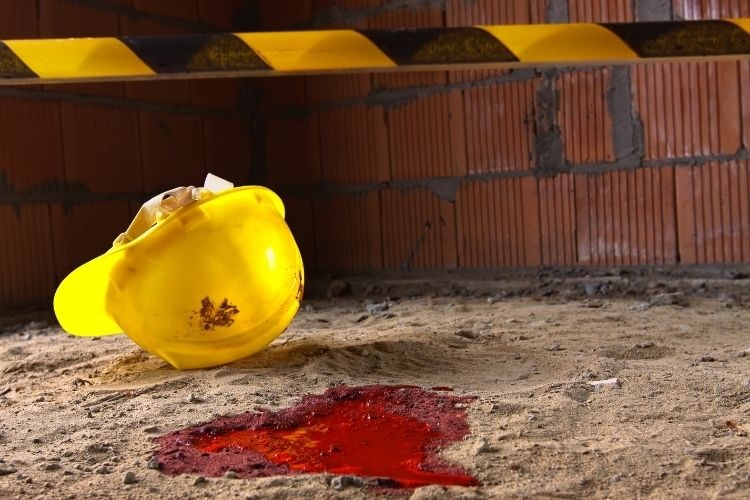Emergency Preparedness
Emergency Preparedness or Business Continuity Planning helps your company survive and continue after a major disruption or disaster, such as a flood, fire, cyber attack or even a fatality.
There’s no doubt that a workplace fatality will bring a sudden and unwelcome disruption to a business irrespective of the industry it’s in, and while it’s not something a business owner likes to think about, each fatality or disruptive event also has the potential to de-stabilise the organisation.
Every workplace death or incident involving life-changing injuries is a tragedy, and the lack of preparation can have devastating effects on those left behind and often results in the end of a business.
But, not all fatal accidents or disruptive events will result in the business folding.
The scale, complexity, duration, absence of robust procedures that stakeholders can refer to etc, can go some way to explaining why some businesses unravel.
Many business owners, senior managers, and the organisations themselves won’t be prepared for such a devastating event – culturally, structurally, or financially.
According to the latest figures published by the HSE (December 2021) for the year 2020/21 there were 142 workplace fatalities, and 822,000 workers suffering from work-related stress, depression, or anxiety.
Whether it’s a workplace fatality or the mid to long-term absence of a business-critical Director, Manager or member of staff, the impact on a business’s day-to-day, business-as-usual activities will be affected.
As risk management and legal compliance consultants the important work we do is not simply preventative and protective – for both the people and the organisation – it’s critical.
One aspect of our work is that we help business owners improve their outcomes from such events, enabling them to become stronger and more resilient.
The health, safety and wellbeing of your managers and workers is both a moral and legal consideration at the best of times, and even more so at the worst of times. Following an adverse event such as a fatality, the fallout can last for days, weeks, months and even years afterwards.
On this basis alone, preparing for a crisis makes sound business sense.
As we suggested in the opening paragraph, for the purpose of Business Continuity Planning, a crisis doesn’t have to be a fatality, it could be the loss of business premises due to collapse, damage, flooding, or even a pandemic or two! Or how about a cyber attack?
In the case of accidents and injuries, if you’re familiar with risk management and risk assessments, pay more attention to those low frequency, high impact events especially when accompanied with attitudes feeding into a culture of “that’ll never happen here”, or “I’ve been doing this job for over 30 years, and it’s never been an issue” – they can catch you off-guard.
Routinely audited systems and procedures won’t necessarily protect you from a fatal accident and, conversely, fatal accidents don’t just happen to organisations with a poor safety record or safety culture.
At SHEQworx we understand what could go wrong, how, when, and under what circumstances, so that we can take steps to prevent it happening in the first place, BUT we also know how to respond effectively if and when something goes catastrophically wrong – and that’s where the ’emergency preparedness’ or business continuity planning is crucial.
It’s not just about putting a procedure or process in place. Like any other aspect of a management system, there are other factors to consider for instance:
· Leadership qualities such as authenticity, communication, empathy, an ability to influence others without the assumed authority, engagement, and problem-solving skills will be helpful.
· The training and development of key directors, managers and workers should be an ongoing business objective (as much as ensuring the training is fit for purpose).
It’s imperative that business owners and decision makers ensure sufficient resources are available at each stage of the business continuity plan, from creation to implementation, review, and improvement.
But What Should be Included in a Business Continuity Plan?
Key Business Processes
What are the essential areas of business needed for your business to function and operate? Each business will be different, so there won’t be a one-size fits all template to apply.
If you manufacture goods, then the production services would be essential. If you provide online, virtual services, then your IT equipment and supporting infrastructure will be crucial.
Other departments worth considering would be Accounts, HR, Health & Safety, Sales and Marketing.
Company Threats
Which of the following could pose the highest risk, or gretaest threat, to disrupting your business?
- cyber attack(s)
- epidemic illness
- biological hazard
- natural disaster – fire, flood, etc
- gas leak or power cut
Determine the Impact
In comparison with a risk assessment, a Business Impact Analysis will help you predict the potential financial consequences to your business should your business be disrupted. It’s also a gauge to determine your potential loss if the disruption lasts for a day, a week, a month or longer.
Such considerations could include:
- loss of sales and income
- increased expenses
- failure to fulfil customer orders
- delayed service delivery
- regulatory fines
Key Resources
What resources in your business do you rely on?
Think about staff, external contacts, equipment, documents.
Now rank those in order of importance to your business. How long can your business survive if each of those faces a period of downtime?
Staff
In your organisation, who are the people you can’t function without?
Think about those who:
- lead your sales services
- manage the company accounts
- know the regulations associated with your products or services
- manage your clients and their accounts
- have access to company finances
External Contacts
Who are the key people and companies outside of your business who are important to its operation? Consider:
- contractors and services providers
- health and safety consultants
- suppliers and distributors
- banks, accountants and lawyers
- IT consultants, electricians or engineers
- utility companies
Would you be able to contact the key people in the event of a disruption? Is everything stored in digital or electronic form, and would it still be accessible if your devices were compromised?
Data, equipment and supplies
- databses needed to conduct client cowkr projects
- equipment such as manufacturing or processing machinery
- technology including specific computers or software
- passwords and identification data for file and site access
- materials and other supplies to make products or tools for your services eg workbooks, training materials etc
Business documents
What documents would you need to continue running your business, or restart it?
- banking information
- HR documents
- legal papers, eg client or supplier agreements, finance agreements, etc
- tax returns
- utility bills
- floor plan of the business identifying anywhere where flammable or explosive materials are stored (we’d suggest this is kept in your car boot and presented to the Fire Brigade at the scene in the event of a fire/flood).
You’d be advised to keep a hard copy of these and keep them off site sufficiently stored and secured in recognition of Data Protection legislation.
And Then What?
Think about what can be done to operate in some way, even if it’s at a lower capacity, as an interim measure.
- Is there alternative equipment you could hire or use?
- Are there alternative premises you could hire? Maybe even a conference room in a hotel?
- Could your staff work from home using company mobile phones and laptops? (Consider if these locations are safe from a cyber-attack.)
- Could anything be outsourced?
Once the initial event has passed and things start to settle down a bit, if you can return to your place of work, that’s great. It might be a case of replacing any damaged items before you can get back to some semblance of normality.
But what if the premises are totally destroyed?
If it’s down to a fire or explosion, it’s time to either look for new premises or consider building back bigger and better than before.
However, if it’s down to flooding, it may be a good time to weigh up the pros and cons of staying where you are and risk another flood or series of floods in the future, or start looking for somewhere else.
Insurance claims
Your insurance policy might cover you for the replacement of equipment, the repair of damaged property, and may even cover you for business disruption, allowing you to claim back any loss of earnings. Please check your policy carefully. It’s important to look for what’s not included as much as what is! Don’t automatically assume you’re protected for every eventuality!
An increasing number of organisations recognise that what we do is not only critical to the prevention of work-related accidents and ill-health, but also in building the resilience of their business through the development of agile, engaged response teams supported by competent leaders and managers, which ultimately protects their operations and the balance sheet.
If you’d like our help creating, reviewing, or implementing a Business Continuity Plan, or help with any aspect covered in this blog, including the training and development of your management or workers, book a free, no-obligation call here or visit our website

